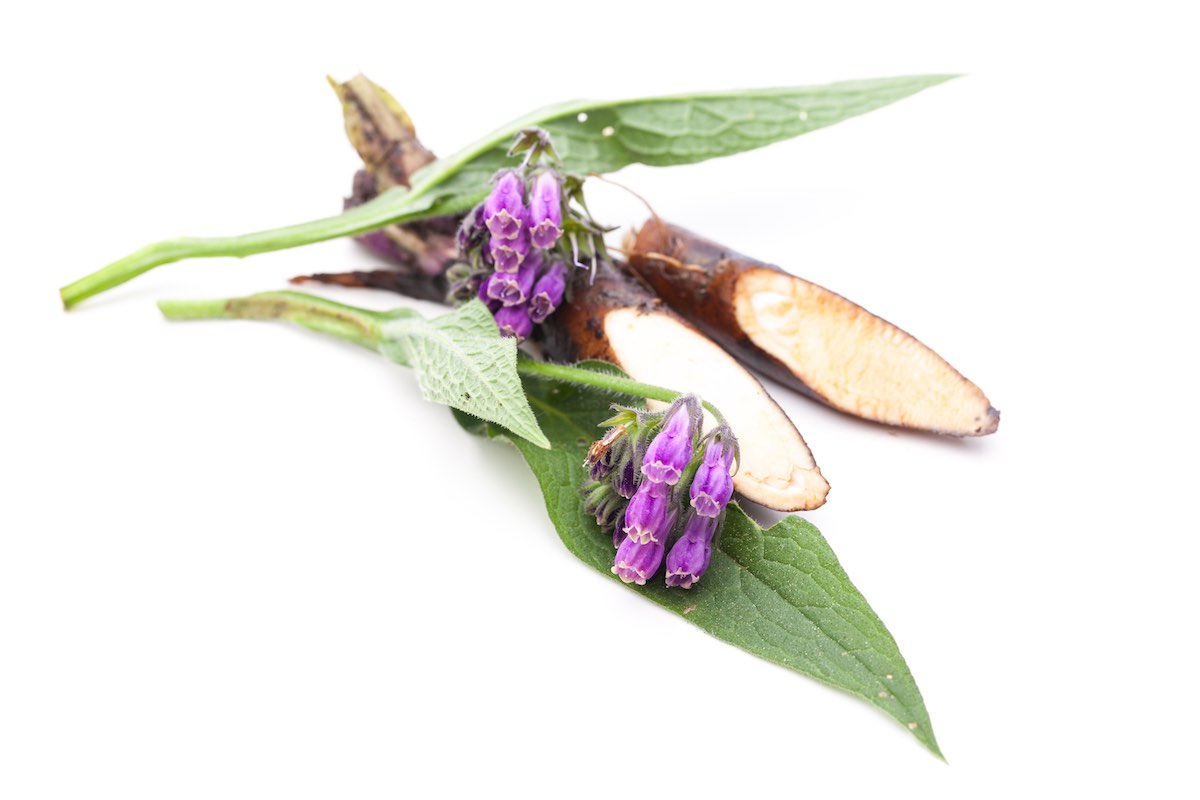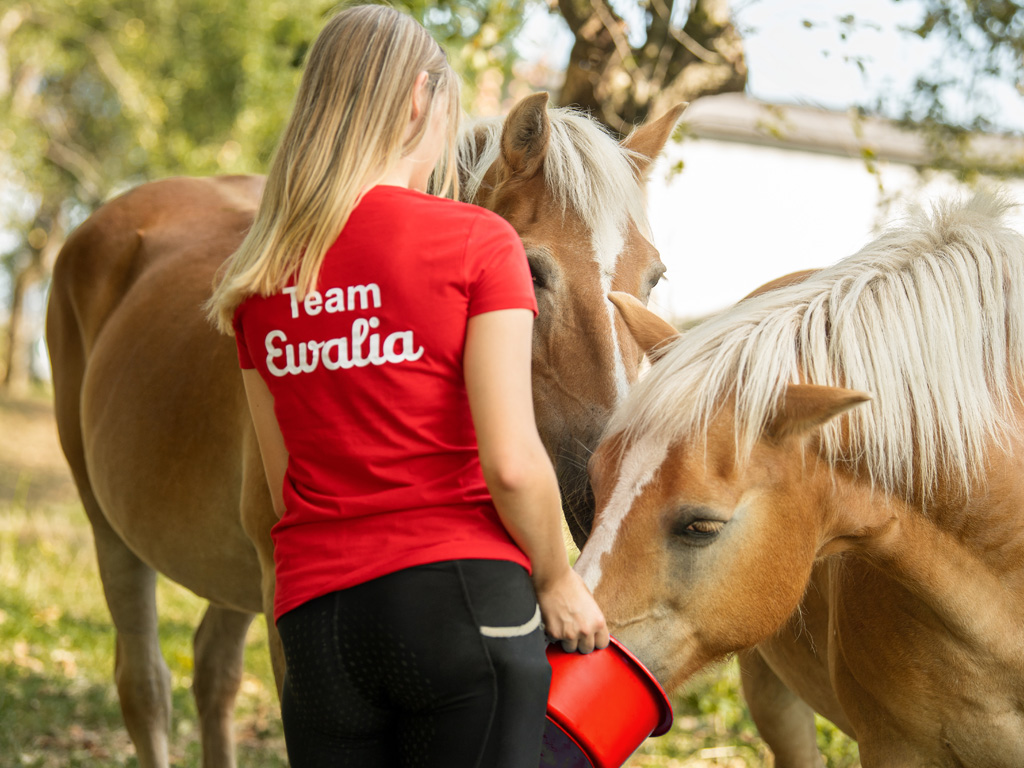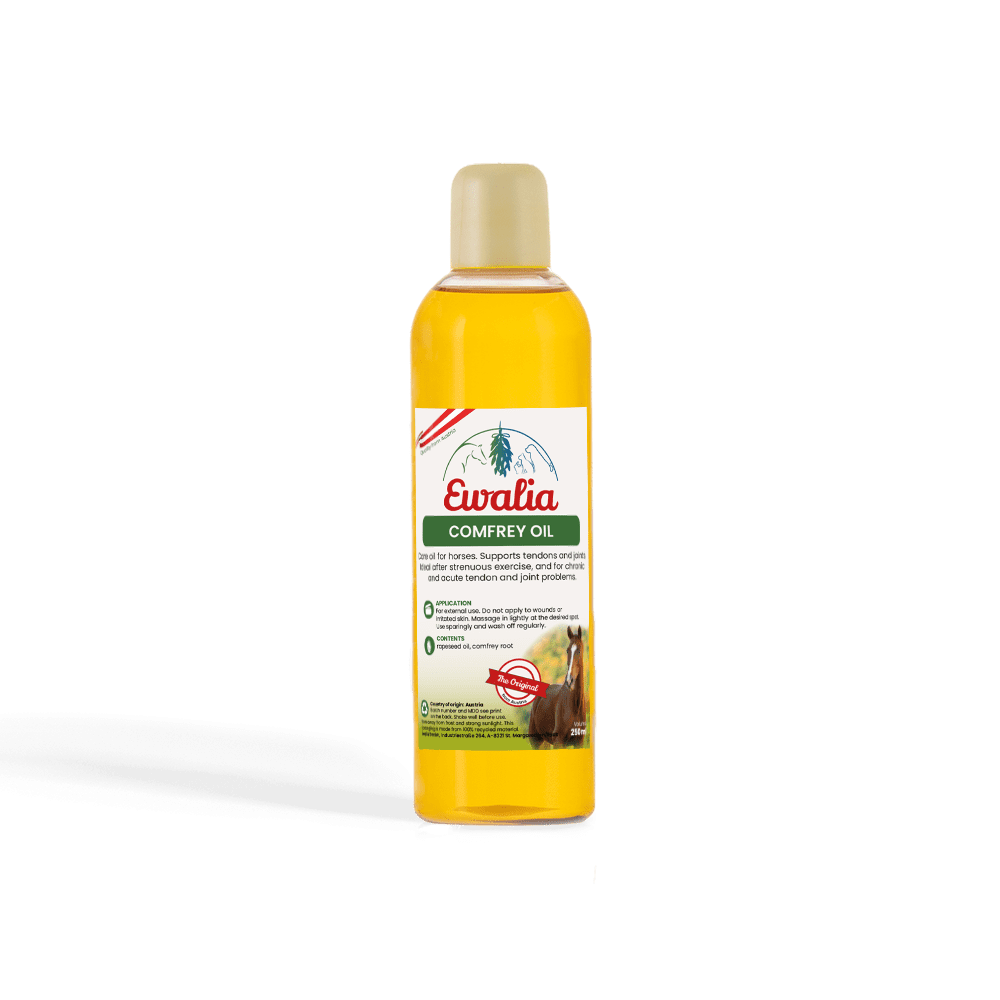Comfrey Root (Comfrey)

Symphyti radix (Symphytum officinale)
Comfrey was recommended for bone fractures and wounds by Hildegard von Bingen. Its common names – knitbone, boneset, bruisewort – reveal its traditional use for healing bone fractures and wounds, often on legs.
In folk medicine it was once taken internally for gastritis or gastrointestinal ulcers. However, this practice was abandoned when one of the substances was found be carcinogenic. It is often used in veterinary medicine as an external application to treat bruises, sprains, tendinitis, windgalls, nerve contusions and bone fractures.
Appearance and occurrence of comfrey
Comfrey is native throughout nearly all of Europe. Used as a drug, its root is grown through controlled cultivation and only rarely harvested in the wild. The part that grows above the ground is rather rough and bristly, its inflorescence is called a scorpioid cyme and it displays a bell-like corolla in colours ranging from light pink to reddish-purple and blue. It belongs to the Boraginaceae family with a bristly cover on its leaves and stem.
Comfrey root is dark brown with longitudinal rugae and a fleshy whitish inside.
Active ingredients of comfrey
Comfrey contains allantoin, mucilaginous substances, hyrocinnamic (phenylpropanoic) acid derivatives like caffeic acid, tanning agents, triterpenes, glycopeptides and pyrrolizidine alkaloids. The latter are damaging to the liver and carcinogenic, but these effects are greatly reduced through extraction processes.
Effects and use of comfrey
Comfrey's effects through external application:
- analgesic (relieves pain)
- antiphlogistic (reduces inflammation)
- supports granulation
- supports callus formation (in bone fractures)
- anti-microbial
It is most commonly used as a poultice, i.e. a freshly made mass of moist comfrey root. It can also be used in oils or as tinctures for salves. In salves for horses, comfrey is very often combined with other herbs to promote blood circulation, for example camphor or arnica.
The use of comfrey in veterinary medicine
Many early writings on veterinary medicine – for example the "Horse Medicine" texts – contain detailed information on using comfrey root to treat various injuries to the body and limbs, especially for horses. Comfrey's medical value then fell into oblivion for many years. Now comfrey root is making a comeback and can be found in many stable medicine cabinets.
Allantoin for cleaning wounds
The allantoin also found in comfrey helps to remove necrotic (dead) tissues. Blow fly larvae produce large amounts of allantoin, making them useful for cleaning wounds (maggot therapy).
Tips for use
A tolerance test on a small, hairless patch of skin is recommended before using any care product for the first time.
Important information about using comfrey on animals
Apply only to intact skin; do not rub in. Do not apply to open wounds or irritated skin. Do not bandage the treated area. Do not allow animals to lick or eat the tinctures, salves or poultices!
Author: Bianca Becker-Slovacek, 23/05/2020
Sources and further reading
- Blaschek, W. (2016). Wichtl - Teedrogen und Phytopharmaka. Stuttgart: Wissenschaftliche Verlagsgesellschaft.
- Brendieck-Worm, C., & Melzig, M. F. (2018). Phytotherapie in der Tiermedizin. Stuttgart: Georg Thieme Verlag KG.














